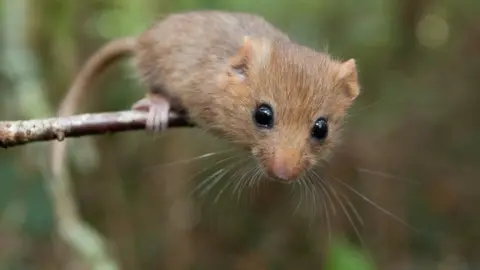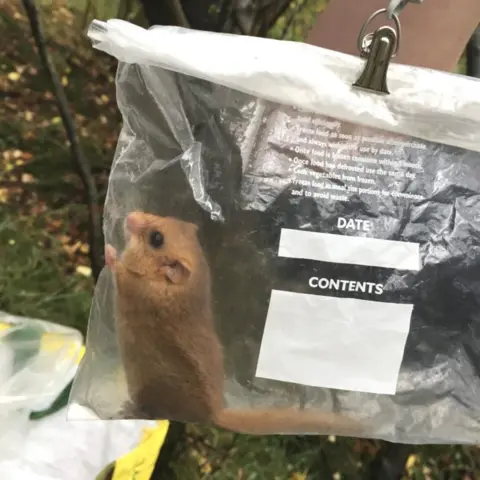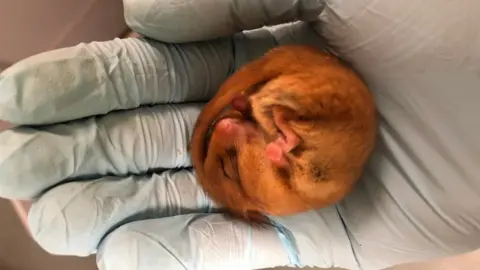Thousandth dormouse brought back to the wild
 PTES
PTESThe 1,000th captive-bred hazel dormouse has been released into the wild in a UK-wide reintroduction scheme for these threatened mammals.
Big-eyed and famously sleepy, the dormouse is a woodland and fairy tale icon, but it is a species in decline.
Once widespread, the animals have now disappeared from 17 English counties.
Reintroduction, scientists say, is the only way to bring dormice back to habitats from which they have been lost.
The project, a collaboration between the wildlife charity People's Trust for Endangered Species (PTES), Natural England and the University of Cumbria, brought 15 breeding pairs to a secret location in the Arnside and Silverdale Area of Outstanding Natural Beauty in Lancashire.
 Gwen Hitchcock/Wildlife Trusts
Gwen Hitchcock/Wildlife Trusts"When I started 15 years ago, there were five populations in northern England, and now there's only one," said Ian White, who has worked for the PTES for 15 years.
"It's a decline in woodland and hedgerow management. Dormice live in the shrub layer of woodland, and in many areas that layer has been stripped out, or the forest has been left to grow up and shade out the understory."
With its tangle of hazel, willow and bramble, the chosen Lancashire release site is ideal for the rodents, but getting them there has been a time-consuming team effort.
 ZSL
ZSLThe 30 dormice in this most recent (and most northerly) release were bred and reared in captivity at London Zoo. They were kept in quarantine for nine weeks and thoroughly checked for disease or parasites, before being transported more than 250 miles by car.
The animals travelled in special dormouse nest boxes that were handmade by prisoners in HMP Doncaster and Humber - as part of a partnership between the PTES and the Department of Justice.
"Dormice belong here," said Dr Deborah Brady, from the University of Cumbria in Ambleside. "But 50% of the population has been lost in just the last 20 years, which fits in with the loss of biodiversity we're facing more broadly.
"And this is a species that we can practically help - we can do something about that."
The same team is planning another reintroduction next year in a nearby location.
 PTES
PTES"We should end up with a population of possibly 70 or 80 animals in three very closely connected woodlands. Those animals will hopefully breed and we'll be watching that population really carefully," Dr Brady added.
With the help of 200 extra carefully monitored dormouse nesting boxes installed in the woodland, as well as footprint tunnels placed along branches the rodents will use to move around the undergrowth, the team will be watching closely to see how well the animals settle into their new home.
Hopefully, said Mr White, there will be dormouse babies in Lancashire this summer.
"One of my go-to dormouse facts is that the newborn babies are the size of raisins," he said.
"The idea, long-term, will be to have dormice in this whole landscape - not just this individual wood."
Follow Victoria on Twitter
